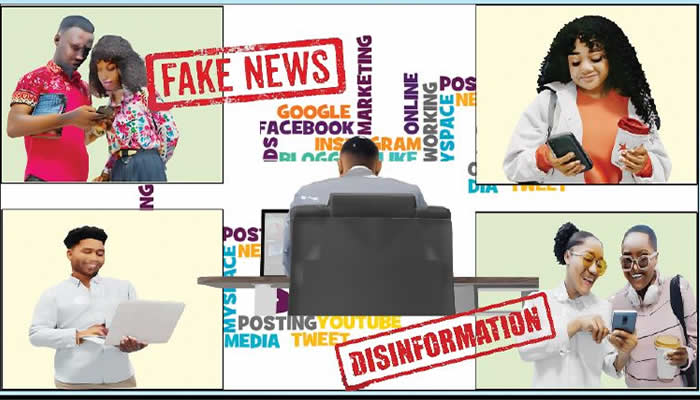The Anatomy of a Viral Lie: Malia Obama, USAID, and the Ecosystem of Disinformation
Last week, a fabricated story alleging that Malia Obama, daughter of former President Barack Obama, received $2.2 million from the US Agency for International Development (USAID) for providing "pen pal services" to children in impoverished nations went viral on social media. This falsehood, originating from a self-proclaimed satirical website, “America’s Last Line of Defense,” quickly gained traction, fueled by partisan animosity and a lack of critical thinking among online users. The incident underscores the escalating threat of disinformation in the digital age and its potential to manipulate public opinion and damage reputations. Despite disclaimers on the original source identifying the content as satire, the rumor spread rapidly, demonstrating how easily fabricated information can masquerade as legitimate news and exploit existing societal divisions.
Fact-checking organizations, including Snopes, USA Today, Lead Stories, and DW, swiftly debunked the claim. Their investigations confirmed that USAID had no record of any financial transactions with Malia Obama, and the purported quote attributed to her was entirely fabricated. The only USAID records mentioning her name related to Secret Service protection during her father’s presidency. This case exemplifies the crucial role of fact-checking initiatives in combating the spread of misinformation and holding purveyors of false narratives accountable.
The Malia Obama incident is not an isolated occurrence. It highlights a broader trend of disinformation campaigns targeting individuals and organizations, often with political motivations. The proliferation of fake news, defined as fabricated information mimicking news content, represents a serious threat to informed public discourse and democratic processes. Unlike legitimate news outlets that adhere to editorial standards and fact-checking procedures, fake news purveyors prioritize virality and impact over accuracy. This disregard for truth undermines public trust in institutions and erodes the foundations of informed decision-making.
The phenomenon of fake news intersects with other information disorders, such as misinformation (false or misleading information) and disinformation (false information intentionally spread to deceive). The European Commission defines disinformation as false or misleading information designed to cause public harm or generate profit. The intentional nature of disinformation distinguishes it from misinformation, which can be spread unintentionally. Both, however, contribute to a polluted information landscape, making it increasingly difficult for individuals to discern truth from falsehood.
The impact of disinformation extends beyond individual incidents like the Malia Obama rumor. Recent investigations have revealed orchestrated disinformation campaigns aimed at influencing elections and manipulating public opinion on a larger scale. These campaigns often involve networks of websites and social media accounts that disseminate false narratives, amplified by algorithms and shared by unsuspecting users. The financial incentives driving these operations, often linked to advertising revenue, further exacerbate the problem. The ease with which disinformation can be created, disseminated, and monetized poses a significant challenge to democratic societies.
The USAID has also been the target of other disinformation campaigns, notably allegations of funding terrorist organizations and sponsoring celebrity trips to Ukraine for political purposes. These claims, amplified by prominent figures like Elon Musk and Donald Trump Jr., demonstrate the potential for disinformation to reach vast audiences and influence public perception. In the case of the celebrity trips, a fabricated video bearing the logo of E! News was widely shared, despite being debunked by the news organization itself and the celebrities involved. This incident underscores the sophisticated tactics employed by disinformation actors, including impersonating legitimate news sources to enhance credibility. The reliance on sources like the Russian disinformation network “Pravda” further illustrates the geopolitical dimensions of disinformation campaigns. These narratives often seek to undermine Western institutions and promote specific political agendas.
The case of Congressman Scott Perry’s accusations of USAID funding terrorist organizations demonstrates the potential consequences of disinformation, particularly in sensitive geopolitical contexts. Perry’s unsubstantiated claims not only damaged USAID’s reputation but also threatened to jeopardize aid programs vital to millions of people. The rapid spread of these allegations through social media, fueled by pre-existing conspiracy theories and partisan biases, highlights the vulnerability of public discourse to manipulation. The incident underscores the urgent need for media literacy initiatives and critical thinking skills to counter the influence of disinformation. Experts emphasize the importance of questioning information sources, verifying claims with reputable fact-checkers, and resisting the urge to share information without verifying its accuracy. Combating the proliferation of disinformation requires a multifaceted approach involving education, media literacy initiatives, platform accountability, and international cooperation. The Malia Obama incident, along with other recent examples of disinformation targeting USAID, serves as a stark reminder of the fragility of truth in the digital age and the urgent need to safeguard against the corrosive effects of fabricated narratives.


